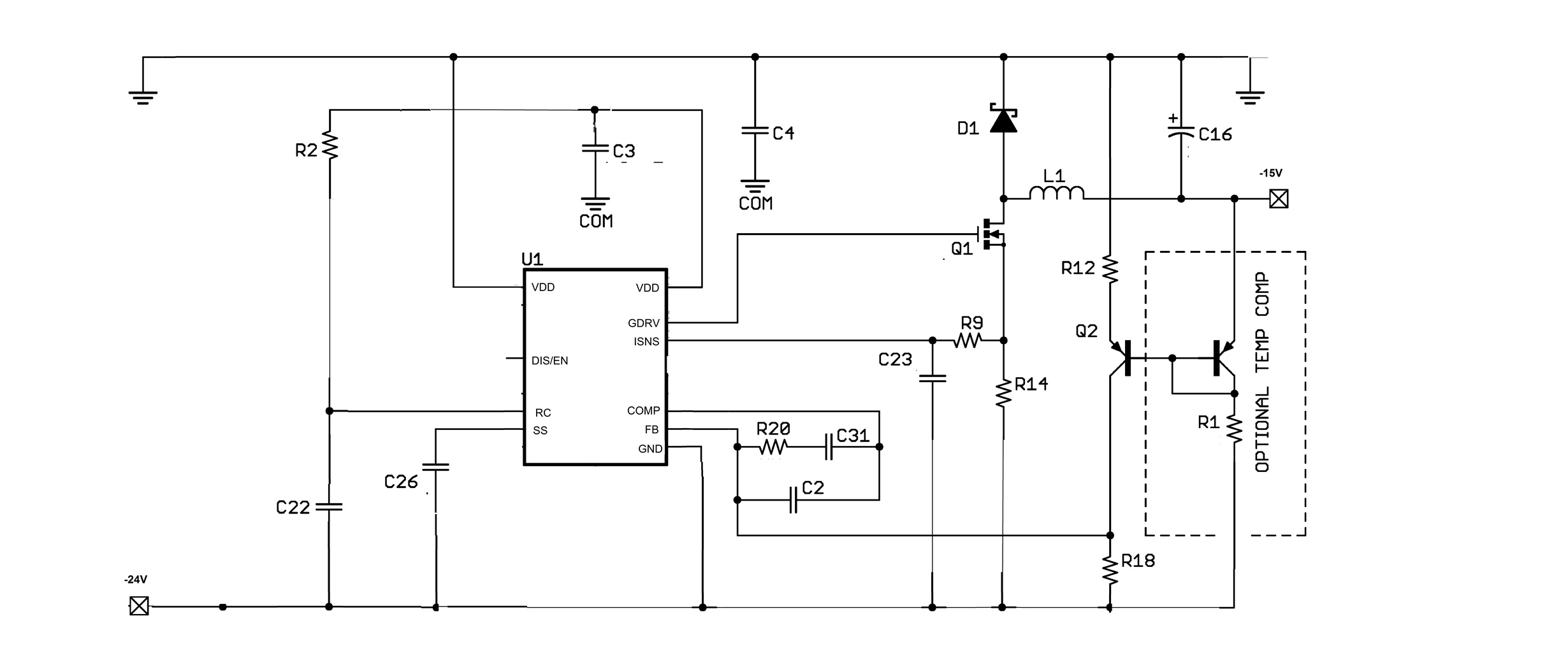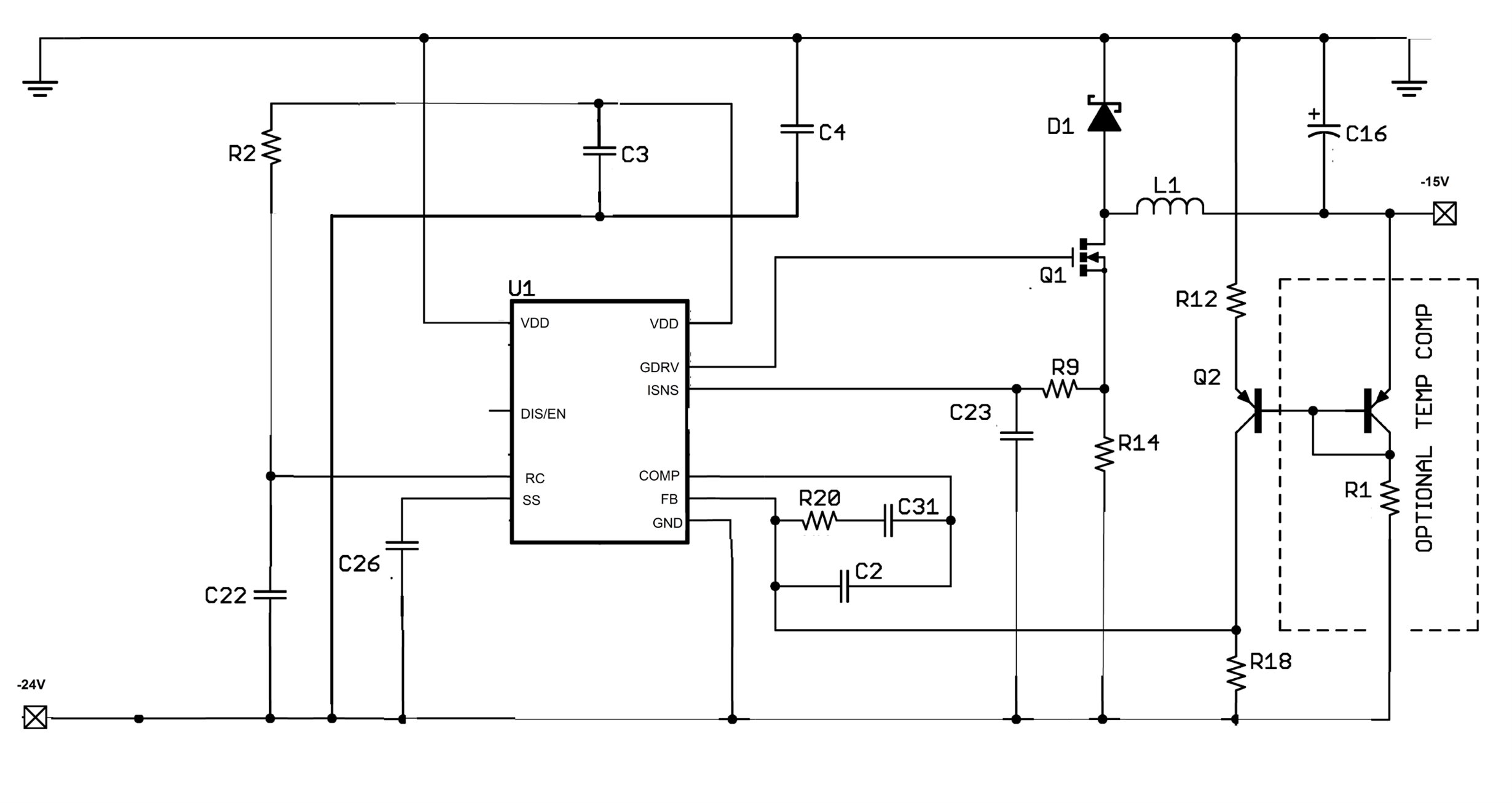Other Parts Discussed in Thread: TLV172
Tool/software: WEBENCH® Design Tools
I am trying to design a -24V to -15V switcher that can deliver up to 6A. Years ago Peter James Miller provided a topology which used the TPS40210 to generate a similar design but didn't provide any insight on how to calculate the R's and C's.
Also Webench does not accept negative input or output voltages for the TPS40210.




